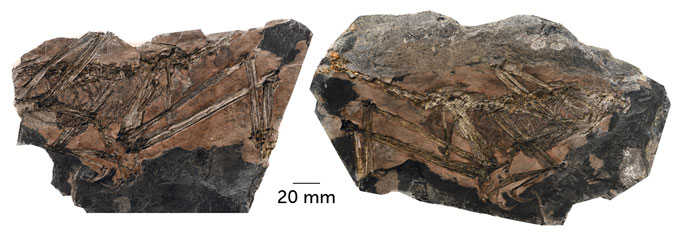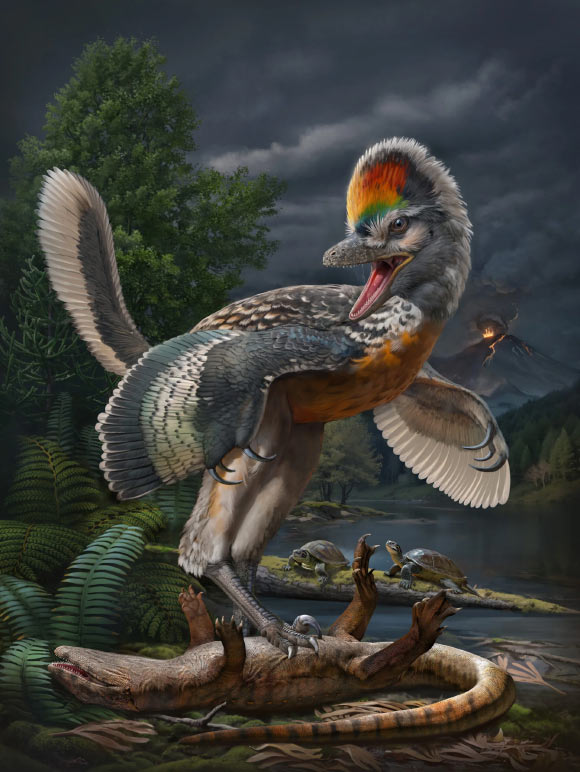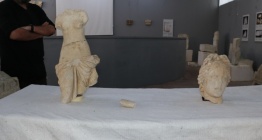The remains of Fujianvenator prodigiosus 30 million years older than any confirmed bird fossil, paleontologists say, could reveal never-before-seen insights into critical early stages of bird evolution. Chinese scientists say the previously unknown species was a ‘high-speed runner’ who lived in a ‘swamp-like’ environment.

The fossil of a tiny bird-like dinosaur with surprisingly long lower legs has been discovered in China.
The creature would have lived during the Late Jurassic Period 148 million to 150 million years ago in what’s now Fujian province in southeast China.
Chinese team has described a 150-million-year-old avialan theropod found in Zhenghe County in Fujian Province, southeastern China.
They said the new species, named Fujianvenator prodigiosus, exhibits a strange mixture of features shared with other predecessors of today’s birds.
‘Our comparative analyses show that marked changes in body [shape] occurred along the early avialan line, which is largely driven by the forelimb, eventually giving rise to the typical bird limb proportion [wings],’ said lead author Dr Wang Min, of the Chinese Academy of Sciences in Beijing.

‘However, Fujianvenator is an odd species that diverged from this main trajectory and evolved bizarre hindlimb architecture.’
The early bird's long legs mean it could have been a fast runner
He said the surprisingly long lower leg and other features suggest that Fujianvenator lived in a swamp-like environment and was a quick runner or a long-legged wader, representing a previously unknown version of early birds.
The researchers say that during the Late Jurassic–Early Cretaceous period, south eastern China underwent intensive tectonic activities, resulting in the unusual landscape where Fujianvenator was found.
The team say their findings, published in the journal Science, opens a ‘new window’ into the Late Jurassic terrestrial ecosystem of the planet, and they plan to continue their exploration of Zhenghe and nearby areas.








 Bir Sapiens kafilesi Avrupa'ya buz çağında ulaştı, soğuğa direndi ama soyunu sürdüremedi
Bir Sapiens kafilesi Avrupa'ya buz çağında ulaştı, soğuğa direndi ama soyunu sürdüremedi  Prof. Dr. Aytaç Coşkun: Zerzevan Kalesi'nin altında bir yeraltı kenti var
Prof. Dr. Aytaç Coşkun: Zerzevan Kalesi'nin altında bir yeraltı kenti var  Arkeologlar 4 Bin yıl önce salyangozların ne amaçla toplandığını çözmeye çalışıyor
Arkeologlar 4 Bin yıl önce salyangozların ne amaçla toplandığını çözmeye çalışıyor  Binbeşyüz yıl önce Balıkesir'de batan tabak yüklü geminin batığı bulundu
Binbeşyüz yıl önce Balıkesir'de batan tabak yüklü geminin batığı bulundu 




